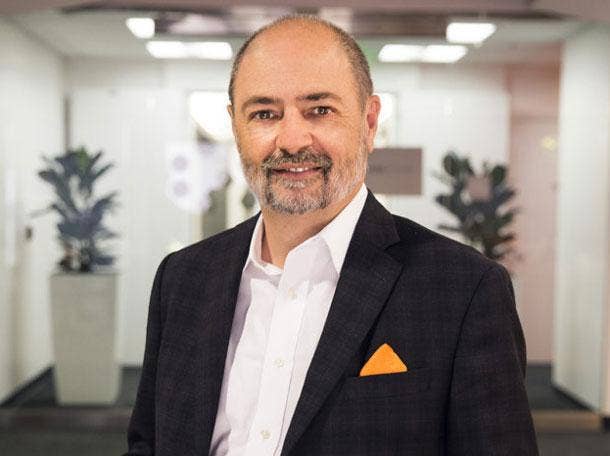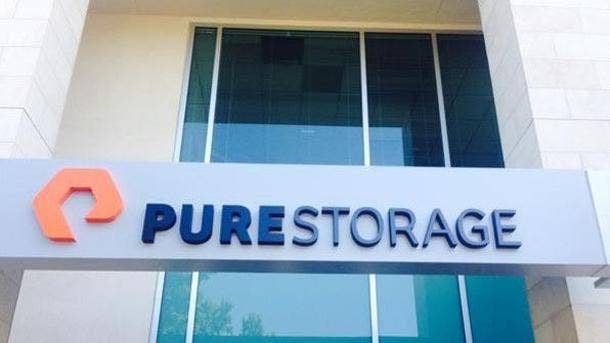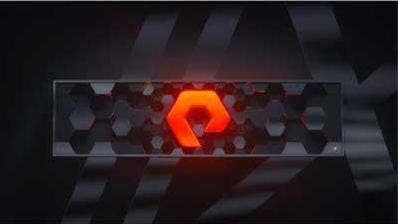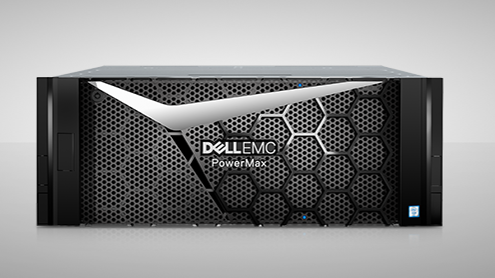Pure Storage CEO Giancarlo On Cloud Moves, Competition, HCI, And What's Next
Pure Storage CEO Charlie Giancarlo outlines how his company is approaching the cloud on multiple fronts, and said that it has no plans for hyper-converged infrastructure because combining its storage with stateless servers is a better way to go.

Pure Storage Taking On The Cloud
Pure Storage, the second-largest independent provider of all-flash storage, has committed itself to becoming a leading provider of storage technology to enable modern applications to take advantage of the cloud. The Mountain View, Calif.-based flash storage vendor has in the last several months introduced several new cloud-focused offerings, some of which have already come to market and others of which are on the way.
CEO Charles "Charlie" Giancarlo recently sat down with CRN to outline his company's moves to make the cloud front-and-center with its all-flash technology. He also outlined for CRN the company's hyper-converged infrastructure play. (Hint: For Pure Storage, HCI does not mean introducing its own compute, but easily attaching to other vendor's stateless servers.)
And while Giancarlo's hands were tied in terms of what he could talk about coming up in the next half-year or so, he did indicate that future plans also have a strong dose of cloud on the way.
For Pure Storage, as it is with its arch-rival NetApp, the cloud is not about providing a place to park some zeros and ones. Instead, it is about building an architecture aimed at easing the management and movement of data and making it available for however clients need it.
For more on Pure Storage's strategy, click the slideshow.

Pure Storage talks about four areas of focus. What are they?
Hybrid cloud, fast consolidated data, AI and analytics, and fast restore. And what fast consolidated data means, customers have been trained by the legacy storage providers over 30 years that, if they have more than one use for their data, which they always do, let's say, production and analytics and development, they have to copy that data to three different arrays, each of the arrays having different characteristics. And so they're paying for that data three times. Our belief is, the data is the data. Why not have one array with three different applications accessing the data with each application getting the performance it needs and with the proper protection against corruption for the data.
But isn't one of the other of those four areas, rapid restore, a part of consolidated data?
Well, it can be. But rapid restore--again, customers have been trained to buy backup only to have to the backup take 24 to 48 hours to provide recovery. In our case, using flash, we're able to provide customers recovery in minutes rather than hours or days. You're right: Now that you have that data backed up onto flash, it could be used for analytics and other things. These four different areas can be separate, but they can overlap.

So what's the latest from Pure Storage in terms of its hybrid cloud activities?
We've got a number of different areas there. One is Object Engine that, in addition to doing rapid restore by having flash on-prem for your latest backups, also allows for archival into the cloud. And again, it's consolidated data, because once that data's in the cloud, it can be used for other things, again, such as for analytics. We have the Cloud Block Store currently in beta, which provides customers exactly the same data interfaces and services that they get on-prem, which not only means that they can migrate their applications much more easily from on-prem to cloud, it means they can have hybrid applications or disaster recovery much more easily in the cloud. But it also means that, even if they want to develop solely in the cloud, [they can move data] onto other clouds or back in-house, and therefore be in a much better position to negotiate pricing. And then finally we have CloudSnap that allows customers to back up their block data base into the cloud.
Is that all related to Pure Storage's DirectFlash Fabric as well?
That's something else, although you can put DirectFlash Fabric in the consolidated data category as well. It removes direct-attach storage. Most compute architectures will put servers in a rack and tie them all together. But even if they're tied to a SAN, the servers still have disks or SSDs inside for program and scratchpad storage. With DirectFlash Fabric, they can get the same performance, but now not have DAS in the servers. So it's not only much more consolidated, much denser, but now the servers are stateless. That's a big deal. If the servers are stateless, they can be retargeted in seconds. So it really is a hyperscale architecture now applied to the enterprise or to the cloud or to SaaS companies who build their own infrastructures.
That sounds like hyper-converged infrastructure.
This goes back to the DirectFlash Fabric. If you think about it, it is disassociated storage and compute allowing the compute to be entirely stateless, meaning that it can be retargeted in seconds. With a little bit of orchestration in the software, it's basically a hyperscale, hyper-converged environment.
Could that mean that Pure Storage might some day come out with the compute part of the equation to make its own hyper-converged infrastructure offering?
No, no, no. There are lots of people who provide very inexpensive compute. So we're glad to work with them.
So you're not going to do like one of your competitors NetApp did with its HCI line?
Not by selling compute.

Over the last month or so, we saw Dell EMC introduce Intel Optane memory as a high-performance tier in its PowerMax arrays and NetApp introduce software to take advantage of Optane server-based memory. Does Pure Storage have Optane-focused plans?
We see the competitors pretty much the same. We believe with all the innovation that we've been coming out with that we're staying well ahead of them. They tend to have to react to our lead here. Part of the reason why they're doing Optane is because their performance can't match ours. We're able to deliver a much higher performance. They need to have a caching architecture in order to keep up.
How about Pure's competitive position overall?
Dell Technologies World was not about storage. It was pretty empty there. We've been hearing about [Dell EMC's] midrange consolidation for a long time, and it's still not due until next year. So we're feeling pretty good about our competitive position. And we're constantly looking at the best way to deploy storage architectures, whether it's flash or Optane or the next thing that comes along, whatever it might be. We have modern software that is easily able to adjust to new storage media that come along. So we feel quite comfortable where we are.

The Pure Storage Accelerate conference is coming up in September. Can you give us some teasers about what we can expect to hear more about then?
Certainly more about the cloud. The products that we announced over the last six months at [last year's Accelerate] will be in GA [general availability], and you'll hear more about our progress there. And finally, we have things in the pipeline that you'll be hearing about brand new at Accelerate.
Any hints?
Again, sorry. I'd have a posse after me if I said more. As much as I would enjoy that, and you would enjoy that, the pain afterwards would be tough to handle.
Now that Pure Storage's Compuverde acquisition is closed, what can we expect in terms of how it will be integrated with your company?
We haven't gone in great detail, which we will do at the Accelerate conference in September. But the first focus area is to add file capabilities onto FlashArray.
How important is that for Pure Storage and its customers?
We think it significantly expands our total available market. Many of our customers who use us on FlashArray for block [storage] have really asked if we could add unified capabilities, that is file and object storage onto the same system. Not only will it allow us to do that, but we think it's going to allow us to put out a very competitive, high-performance file offering as well.